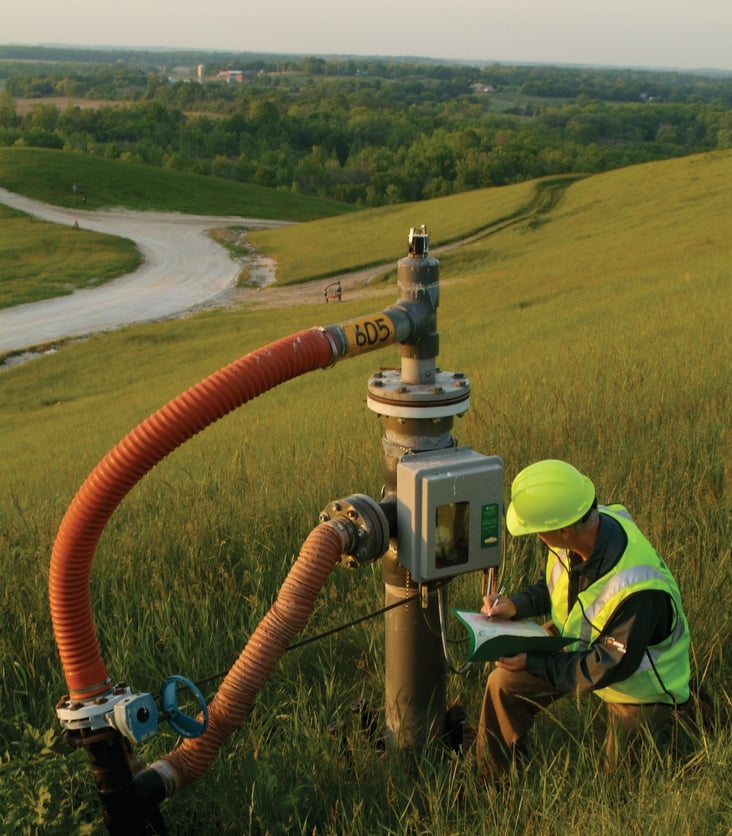This post is one in a series featuring the complete slate of advanced energy technologies outlined in the report This Is Advanced Energy. 
Image courtesy of Waste Management.
Landfill gas (LFG) is a form of biogas produced by decomposition of organic waste in landfills. This gas is a roughly 50:50 mixture of methane and carbon dioxide, with smaller amounts of nitrogen and other compounds. LFG is produced naturally in all landfills, and can be captured and used for productive purposes instead of being vented or flared. In order to capture LFG, perforated tubes are inserted into the landfill. With existing landfills, the collection system must be added, but with new landfills the system can be installed as part of normal operations. After being extracted from the landfill using vacuum pumps, the LFG is compressed, dried, cleaned of certain contaminants, and used to power a gas turbine, a gas engine, such as GE’s Jenbacher landfill gas engine, or in some cases a boiler or steam turbine. As a rough rule-of-thumb, 1 million tons of municipal solid waste (MSW) in a landfill will produce enough LFG to produce 1 MW of electricity for about 20 years. LFG can also be used in combined heat and power systems (CHP), or used directly as an industrial process fuel if a suitable site exists near a landfill. With addition purification, LFG can be upgraded to a pipeline-quality substitute for natural gas, including compressed natural gas (CNG) for vehicles.
Most landfill gas projects are small — from less than 1 MW up to about 20 MW. Exelon’s 60 MW Fairless Hills Steam Generating Station in Pennsylvania is one of the largest generators in the country running on LFG, sourcing its fuel from nearby landfills. As of early 2015, there were 645 LFG energy projects across 48 states with a total capacity of 2,066 MW, including over 430 electricity generation projects as well as CHP and direct use projects. However, with approximately 2,400 operating or recently closed landfills in the United States, there are opportunities across the country for increased use of LFG. Taking advantage of just 440 of these landfills would provide an additional 855 MW of capacity, enough to generate electricity to power over 600,000 homes.
LFG is generally used in baseload generating facilities but can be used in more exible peaking units; both are essential for grid reliability. At the same time, capturing LFG improves landfill management, reduces odor, and eliminates the need to are or vent the gas. LFG projects also create local jobs while creating an additional revenue stream for the landfill.
Learn more about landfill gas, and all the rest of the advanced energy economy, in the report available below:
